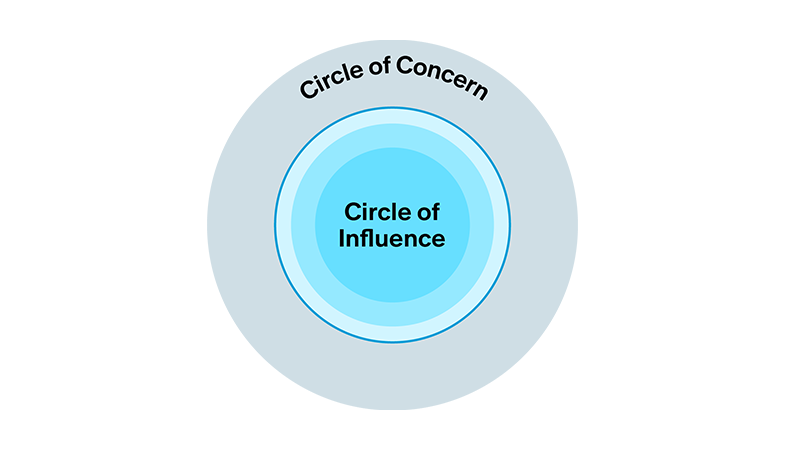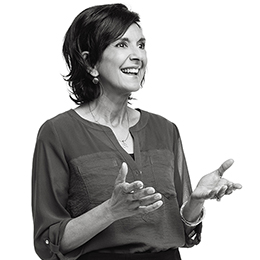Reducing Fear and Anxiety in Times of Uncertainty

Fear is a natural human emotion, particularly when the stakes are high and include threats to health, safety, or our ability to financially support our families now or in the future. In true fight-or-flight situations, fear is critical to survival. Our adrenal glands kick in, ramping up the energy in our body to do what we need to survive.
As leaders, it’s critical that we allow and validate these natural emotions in ourselves and our team members. Organizations face a unique challenge in uncertain times when fear is ever-present or evolves into a continuous undercurrent of anxiety that wears down the body and mind. Left unchecked, fear and anxiety deteriorate our higher-level thinking abilities, memory, and concentration. We diminish our capacity to think critically and solve problems creatively exactly when we need those abilities the most.
As President Franklin Delano Roosevelt stated in his inaugural address, “Let me assert my firm belief that the only thing we have to fear is fear itself—nameless, unreasoning, unjustified terror which paralyzes needed efforts to convert retreat into advance.”
Leaders can bring the higher-level functioning of our team back online and convert “retreat into advance.”
In this article, we’ll discuss three strategies for managing fear and anxiety in our leadership roles:
- Listen intently to your team as they express their fear and anxiety
- Foster connection
- Focus on your Circle of Influence® and help team members focus on theirs
Listen Intently
People will likely be anxious when the outcomes of a situation are entirely unknown. Some might put it into words: I’m scared I’ll lose my job. I worry about my child’s future. I’m anxious about my finances. Others will uncharacteristically lose their temper or break down in tears during a minor conflict.
When emotions are high, particularly at the onset of a crisis, slow down and be human. While your head is swimming with urgencies— retaining customers, increasing cash flow, saving the business—you won’t get the effort required to address those urgencies if emotions are hijacked.
Practicing compassion, besides being the right thing to do, will help team members move to performance. Research by Jane Dutton at the University of Michigan suggests that leaders who demonstrate compassion towards employees can foster individual and collective resilience during challenging times. One way to practice this compassion is to listen with empathy and intention.
Most leaders are well-versed in the importance of listening, but they listen with the intent to respond or solve. Empathic listening, on the other hand, means listening with the intent to understand another person from their frame of reference. It requires you to move off your own timeline and agenda and intentionally check into another person’s point of view and emotional state.
Encourage your people to talk to you, then listen empathically to what they share: How are you, really? How are you adjusting to changes at work or at home? Effective leaders view this as a chance to “check in,” rather than “check on.”
Empathic listening is taking off your shoes and putting on someone else’s. In practice, reflect back what another person feels and say it in your own words until the person feels understood. The basic framework for empathic listening is “You feel ______ about,” remaining silent and simply nodding. It means not judging, probing, evaluating, advising, or interpreting. This may also require you to check a natural tendency to interrupt or immediately solve their problem.
Do leaders get the chance to speak and be understood? Of course. But the sequence is critical. When emotions are high, stop talking and start listening empathically until that person signals they feel understood. When emotions de-escalate, you can respond, ask clarifying questions, share your point of view, or give advice. Once that foundation of mutual respect and trust is established, you can get to work!
If possible, have these conversations in person or via video, so that you can see facial expressions, body language, and other nonverbal communication. Without seeing the person, it’s much harder to listen empathically and develop a deep understanding of thoughts and feelings. Make sure your phone is on silent and your computer notifications are set to eliminate distractions—even from clients and bosses. We demonstrate respect by giving people our full attention.
Note: Clinical anxiety disorders or other mental health illnesses are outside the scope of this article and shouldn’t be confused with natural and elevated levels of human concern. Consult your human resources department about the appropriate supportive actions if needed, confidentially and quickly.
Foster Connection
Be very deliberate in how often you meet with your team. Our regular cadence of meetings and 1-on-1s may not be enough in times of crisis or uncertainty. For example, you might huddle each morning for 15 minutes to respond to questions or convey new information.
Encourage subgroups to work on challenges while supporting each other. If you’re in a hybrid or remote workplace, utilize technology and build structures and processes for virtual collaboration. Foster this connection not just with your team, but with your clients, partners, and interdepartmental colleagues.
Additionally, think about your own process for working through your emotions. Just because you’re a leader doesn’t mean you’re immune to having the same fear and anxiety reactions. Consider how much to share to create a connection with your team—what’s private and what’s public? Beware of oversharing your own fears, but you may choose to share some challenges and reactions to show we’re all in this together. People thrive more when they can relate to their leader.
No matter what our title, we don’t have control over everything. It’s critical that we influence what we can versus investing time in things over which we have no control.
One strategy is to write down everything on your mind in a stream of consciousness: How do we keep sales up? Will I have a job next month? Is the product launch going to be delayed? How will this impact how we do business? Write them all down— personal and professional—and everything else you’re concerned about. This is your Circle of Concern®. Then look at those concerns and highlight everything you can influence, focusing on your personal strengths. This is your Circle of Influence, consisting of the challenges you have the power to influence. You might see possibilities for transformative, quantum-leap influence. Or you might see chances for small, incremental change. Either way increases your personal power.
The Circle of Influence
When we’re proactive, we focus our efforts on our Circle of Influence®. We work on the things we can do something about. This allows us to expand our influence over time and create more choices and opportunities. When we’re reactive, we get stuck focusing on our Circle of Concern™—on things over which we have little or no control.

Focus on Your Circle of Influence and Help Your Team Focus on Theirs
An interesting phenomenon occurs depending on which circle we focus on: When we focus on our Circle of Concern—the things we absolutely can’t influence but still care about—we have less time and energy to spend on things we can influence. Consequently, our influence and power shrink But when we focus on things we can influence, utilizing our creativity, agility, and innovative ideas, our Circle of Influence grows.
This is a great exercise to share with your team, especially if they seem stuck. But remember the importance of the order: The more you can help them reboot their “thinking brains” by practicing empathy and fostering connection first, the more likely they are to move their focus from their Circle of Concern to their Circle of Influence.
In the book The 7 Habits of Highly Effective People by Stephen R. Covey, Habit 7: Sharpen the Saw®, known as the Habit of Daily Self-Renewal, surrounds all the others. There’s an important reason for that: You are the most valuable tool you have. And your organization, colleagues, and customers won’t benefit from your leadership if you are fatigued and frazzled. Renewal includes the following four dimensions, all within our Circle of Influence:
- Physical: In difficult times, many of us gravitate toward physical comfort. While that’s understandable in the short term, it might make us feel worse in the long term. Assess your eating habits, too, and notice if you’re subconsciously turning toward carbs and sugar, or whatever foods you find calming. If you find it difficult to stop, at least raise the habit to consciousness by thinking, “I’m choosing to eat for comfort right now.” Many of us are also seeking comfort in the form of staying up late to binge-watch shows or scroll social media — understandable, yes, but try to curb the habit if it’s disrupting your sleep schedule. And finally, curling up on the sofa can give us a much-needed sense of comfort as well, but make sure you are also breathing in fresh air and moving around to the extent you can.
- Social/Emotional: In uncertain times, many of us shut down or isolate ourselves. But even natural introverts benefit from regular social stimulation—and we all need outlets for emotional fulfillment. Whether you’re scheduling working lunches with colleagues, grabbing dinner with a friend, or hosting a game night with family, it’s important to connect with important people in your life and broaden your perspective to welcome others’ experiences. You might even join or form a community group to support causes you care about. When you’re focused on what you can do, rather than simply on what you’re feeling, you can create a collective Circle of Influence with others that can allow you to feel uplifted and renewed.
- Mental: We can’t control the news, but we can control how often we check it. The news is captivating but also debilitating. Things are changing fast, but not so fast that we need an hourly update—we can catch up on everything we need to know by checking the news once a day. Just as you would restrict or limit conversation with a toxic friend or family member, set boundaries or a schedule on how often you check for updates so they don’t hijack your emotional state all day. This is a perfect time to “carry your own weather,” as written in The 7 Habits of Highly Effective People, and not let your moods and wellbeing become subject to the whims, emotions, and updates by others.
- Spiritual: How do you find meaning? Might you express gratitude more often, get out in nature if possible, or seek solace in renewal or meditative practices? In what ways can you contribute to the community in which you reside, making a difference for those facing significant challenges?
What is one small practice that you could implement each day in each of these categories? When you make conscious choices about your wellbeing, you’re focusing on something within your control and expanding your Circle of Influence.
Download our free guide on The 7 Habits of Highly Effective People to get a crash course in how self-effectiveness can help leaders and teams become more resilient, engaged, and fulfilled amid uncertainty.
The Most Trusted Leadership Company
Learn how your organization can use our people, content, and technology to create collective action and meaningful change.

Another way to proactively influence our wellbeing is to become more aware of and leverage our energy’s natural ebbs and flows throughout the day, as revealed in our FranklinCovey On Leadership podcast interview with social scientist and famed author Daniel Pink. He explained that each of us experiences energy peaks, troughs, and periods of recovery throughout our days. They will vary greatly for each of us and may be disrupted in times of crisis or uncertainty.
Take some time to self-assess: When are you at your personal “peak?” Can you use that time to marshal your mental and physical energy towards projects or relationships that need your best thinking and focus? Same for your trough: Throughout the day, when do you naturally find yourself in an energy slump? Perhaps instead of trying to power through it, we can accept this low energy point and lighten our schedules to coincide with it, so we renew and recharge for the coming recovery.
We can also work within our Circle of Influence by distinguishing our emotions from facts. In her FranklinCovey On Leadership interview, Harvard Medical School psychologist Dr. Susan David, author of the bestselling book Emotional Agility, reminded us that emotions, feelings, and facts are important to consider, but we must be careful not to confuse them. Facts are often more helpful in making proactive decisions, whereas emotions and opinions tend to drive us into the Circle of Concern.
Finally, I believe one of the highest uses of our Circle of Influence is to draw on four uniquely human gifts, described by Dr. Stephen R. Covey in his 7 Habits writings:
- Self-awareness is our ability to stand apart from ourselves and examine our thoughts, moods, and behavior. How am I feeling? What am I anxious about? How am I managing that? What am I communicating to my team—directly and indirectly? What’s it like to work with me right now?
- Imagination is our ability to visualize beyond our experience and present reality. We’re not talking about visualizing our 80th birthday right now. Can I visualize next month? What about three months from now? 2026? What do I need to do now to be positioned to emerge in the future?
- Conscience is our ability to sense right from wrong. What is the right thing to do? What can I do to help others? It brings to mind the adage, “Humble leaders are more concerned with what is right than being right.” Especially during times of uncertainty and even hardship for many of us, recognize what you can do to provide support to people at work and in your community.
- Independent will is our ability to act outside of external influences. In emotional intelligence parlance, that means self-managing. Am I making choices each day that align with my vision, values, and conscience, despite the urgencies, worries, and obstacles that arise?
During this challenging time, leaders must remember to be human by practicing compassion through listening, fostering connection, and focusing on what we can control—and help our team members do the same. Remember that the order is important: If we don’t first help our team members feel understood, we won’t be able to guide them through strategies that will help reduce fear through connection and our Circles of Influence.
In the words of William James, “Act as if what you do makes a difference. It does.”
Learn more about how successful organizations can lead through uncertainty to future-proof their teams and achieve outstanding results.








